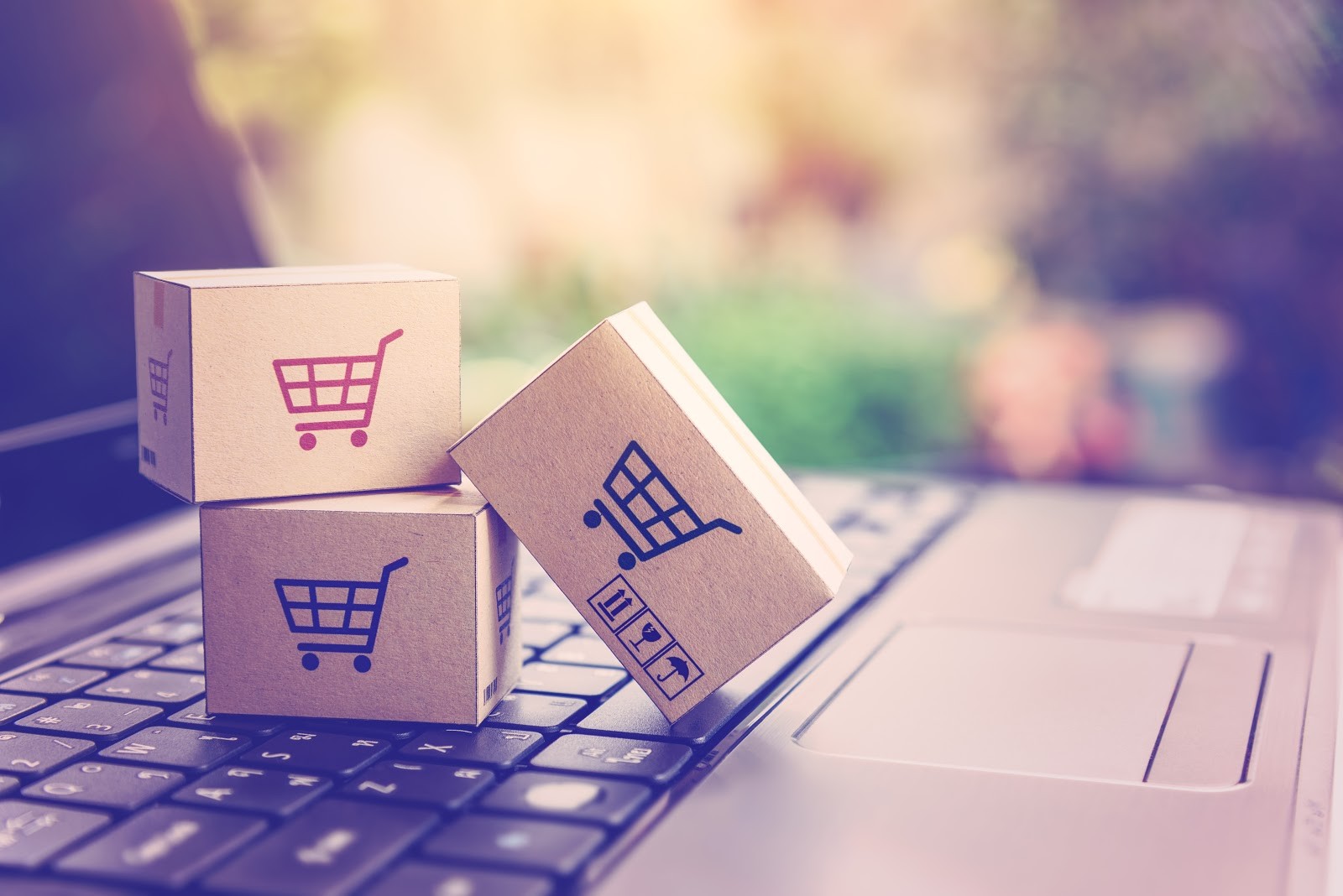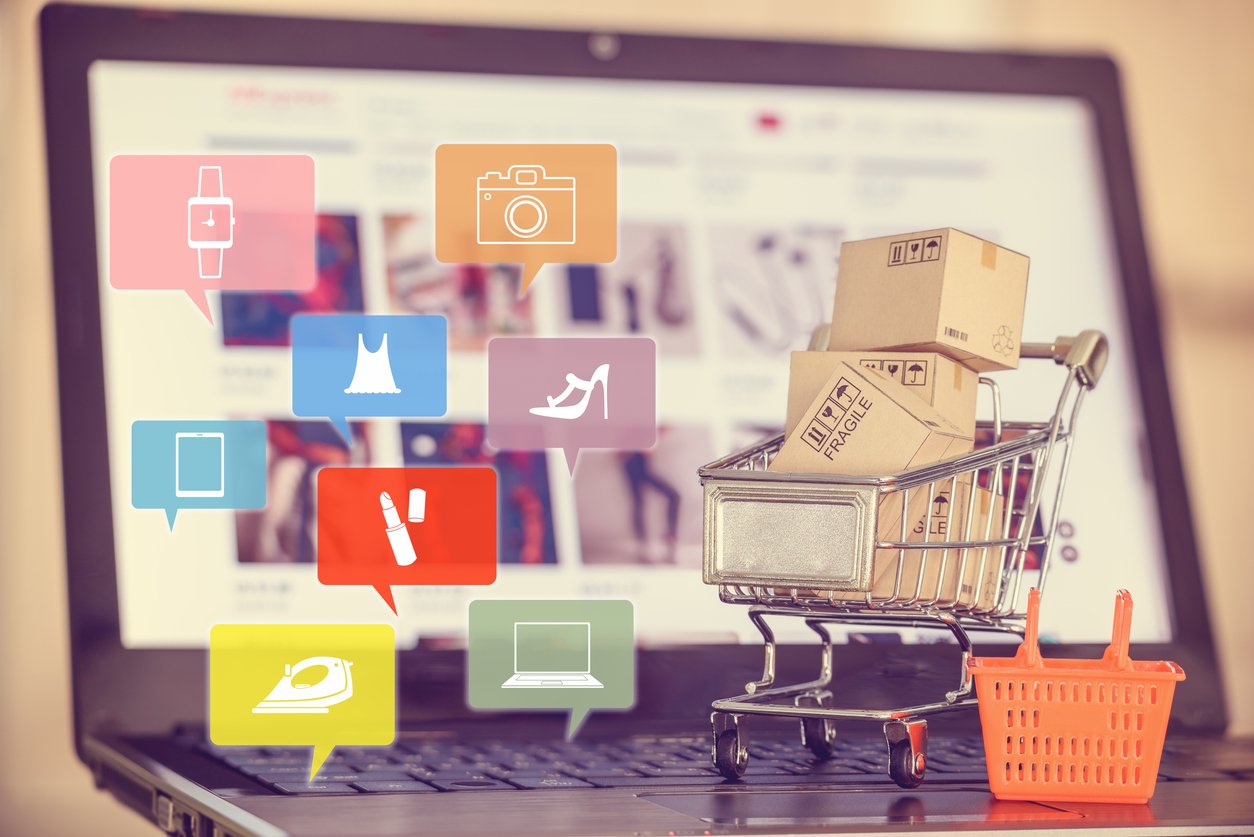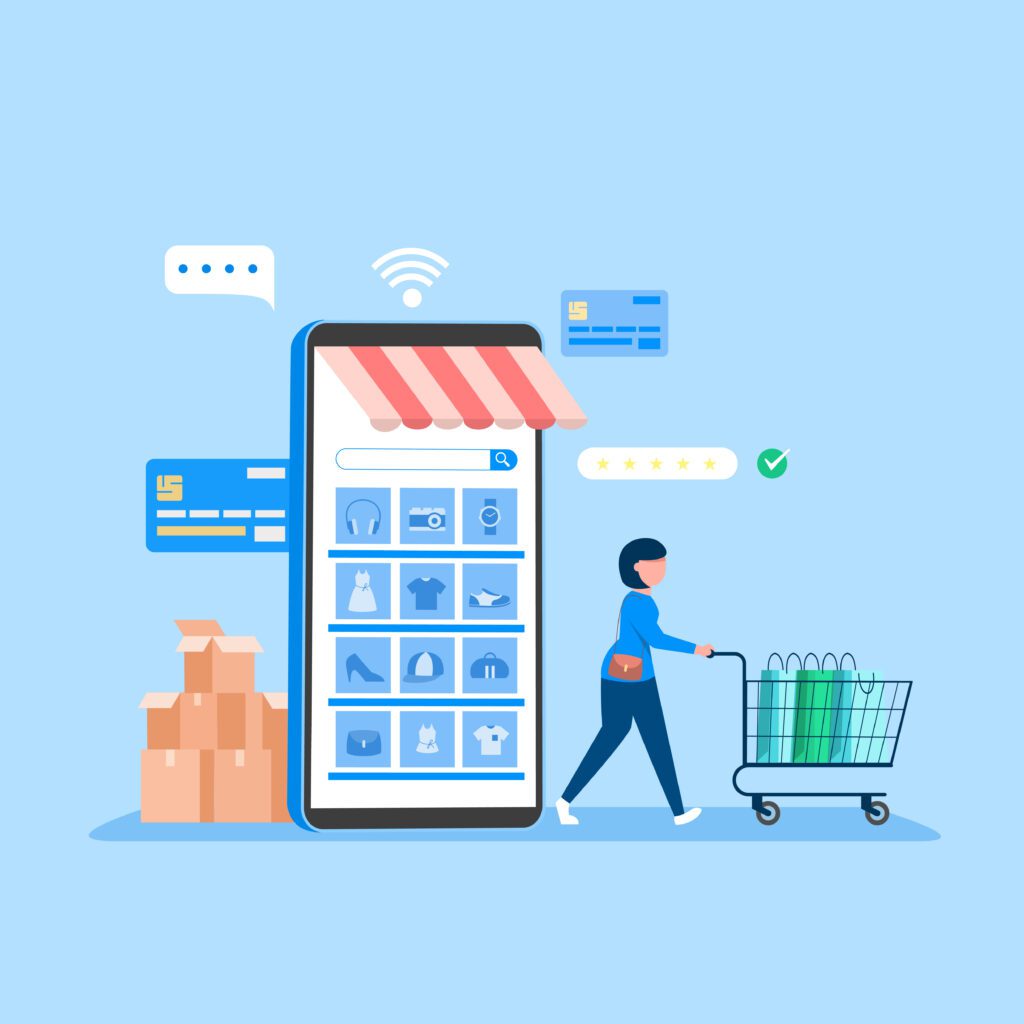The Ecommerce Business has advanced by 5 years thanks to At the same moment, legacy retailers such as Lord & Taylor but also Century 21 are declaring bankruptcy.
It was yesterday that you decided to take your online store.
Ecommerce Business had such a 14.1% share of the worldwide retail sector in 2019, and Statistic predicts that by 2023, 22% of all payment methods would be conducted online.
By 2024, hard currency sales in the United States might amount to over $475 billion — well that's just B2C.
Ecommerce Growth Forecast from Statistics. We'll go with how to set up and release a thriving (and Covid-proof) e-commerce store in this guide for beginners.
We'll cover all you need to know about starting an e-commerce business, which includes:
How to discover items to sell on the internet.
Making the decision about your online business plan.
Validating the ideas of your product.
Getting your business registered and incorporated.
What's the best way to get your products?
Developing a business strategy.
Selecting a payment gateway and getting your store up and running.
Increasing the amount of traffic to your e-commerce store.
Increasing sales and evaluating the results.
By the end of this article, you'll have a good chance of being able to start and run a great online store.
Let's get into the process
Disclaimer: Many of the links below make my affiliate commissions at no cost to customers.
All those are, however, the greatest tools I've tried and consider are most beneficial for building and managing an online business. This privacy policy has a complete affiliate description.
How and where to Begin an Ecommerce Company (Step-By-Step Guide).


Discover items to sell on the internet
You must sell a few of two types of materials to be successful:
In a developing sector, a high-demand product.
A commoditized, high-quality item.
Products for a Specific Market
Niche commodities serve a highly specific segment. You choose this high-quality commodity, perhaps with many varieties, and design a targeted marketing plan rather than a hundred various product categories.
Niche items are frequently priced sensitive and have significant profit margins since they are exclusive and attractive.
Comparatively tiny and one merchandise (a crochet shawl or a sculpture of hand-thrown pottery) are examples of unique products ( seasonal preserves, handmade leather bags).
LiveLarq.com is the source of the LARQ Plastic Bottle review page.
Products that have become commodities
High-demand or critical digital or physical items with a large current consumer base are referred to as commoditized products. In a nutshell, they're items that everyone requires. Commoditized products account for the vast bulk of B2C e-commerce purchases. They're prevalent, and because the sector is so competitive, e-tailers frequently modify pricing to remain ahead of their competitors.
Chargers, saucepans, footwear, software programs, clothing, children's toys – you name it, anything's been commoditized.
Surprisingly, commoditization frequently starts with a truly creative product that becomes popular; numerous companies then begin to imitate the original product and form rivalries. Hush Puppies, a footwear firm, and Fujitsu, a technology corporation, are two companies in the commoditized product industry.
Home Page of Fujitsu
Many successful internet businesses sell both specialty and commoditized goods. Their specialty products set them apart, whereas the commoditized things they handpick create volume to your online storefronts. Take, for example, Berlin Packing. Custom packaging is its specialty, but the company also sells a variety of common packaging items.
How to Pick the Right Products
Perhaps you even have a wholly original concept, maybe you're an innovator or a designer with a prototype system. If that's the case, congratulations. If not, don't panic; you don't need to invent the next great thing in order to run a successful e-commerce business.
Instead of thinking about ground-breaking innovations, evaluate what people want and something that you can provide.
The following pointers can assist you in coming up with a viable niche product to offer online:
There is a solution to every problem: It is common for innovation to begin at home. Can you come up with marketable solutions (items or services) to challenges you come across on a frequent basis?
Discover your duty: You're about to invest a significant deal of time and effort into your startup company, so make sure it's something you'll enjoy doing.
Determine your company's brand capability:
In e-commerce, marketing is crucial. How are you going to market your product?
Who'll be your intended audience, and how will you establish a bond with them? Guilty pleasures are on the menu: People are willing to spend lots of money on something they enjoy.
You'll almost surely create a customer following if you can tap upon consumers' passions or vices with a compelling product. Keep your eyes peeled for opportunities:
One of the greatest entrepreneurs is always on the lookout for market opportunities. If you pay attention to cultural movements, you'll be able to predict consumer preferences before they happen. You could even be able to assist them in manifesting themselves.
Embrace the trend as soon as possible: When it comes to trends if you spot one that appeals to you, jump on board as soon as possible. The sooner you enter a new market, the further likely you are to be recognized as a pioneer in the field. Brands that are more “authentic” also get a bigger piece of the industry pie.
Identify niche markets:
Larq was noted earlier as an excellent example of a niche concept. Larq identified an issue (unsanitary bottles) and devised a remedy (a rechargeable sanitizing water bottle). Before ever generating a new product launch, Larq raised funds in venture money. The strength of the niche, oh, the power of the niche.
By the time you've finished thinking, you should have a shortlist of products or services. If that's the case, try to figure out who your primary competitors are for each product. If you're in the middle of a busy field, go on to another one but the next until you locate a less populated niche. Then you must choose whatever product users want to use.
Decide on a business concept for your online store.
You've decided what you'd like to sell; the next step is to figure out how you'll sell it. In the world of e-commerce, there really are four basic business models: business to customer, consumer to the customer, consumer, and customer to customer. Let's take a closer look at each category:
From one company to another (B2B)
Ecommerce enterprises that sell to those other companies are known as B2B. Oftentimes, the finish is indeed the business buyer (stationery, office technology, or furniture). The majority of Transactions, on the other hand, include wholesale stocks, components, or commodities.
B2b e-commerce ventures, on the whole, have lengthier sales cycles. Since complex sales frequently require committee clearance, high-stakes transactions might take months. You earn high-value transactions and recurrent purchases in exchange for your patience and diplomacy.
Consumer to Business (B2C)
Simply put, B2C stands for marketing e-commerce. Your clients are ordinary folks, and you sell goods and services at market prices. Some B2C businesses sell real goods, while others later sell mobile applications. Others, but on the other hand, sell various types of recurring membership.

Because risks aren't as great in B2C e-commerce, the sales cycle is shorter. The majority of transactions involve a single customer rather than an entire executive board. B2C companies often have significantly lower expenses in order (AOVs) as B2B companies, but they earn more sales.
Business Models: B2B vs. B2C
SlideShare is the source of the story.
Business to Customer (C2B)
Although C2B is a little obscure, it is a reasonable business concept. Customers offer goods and services to trade openness in a consumer-to-business setting. Using freelancing sites, in which firms engage self-employed workers to do various assignments, you may see this pricing strategy in action.
Customer to Customer (C2C)
Consumer-to-consumer (C2C) enterprises bring consumers together. When people offer products or services to other people, they are charged subscriber fees, transaction fees, or transaction costs. Auction businesses, such as eBay, and online classified services, such as Craigslist, are examples.
Business income models bring in their bacon, while business models establish the structure of your organization. Business income models, sometimes known as cost delivery strategies, impact how you maintain your inventories. Other popular choices include:
Direct to Consumer (D2C)
Business to consumer companies sells directly to consumers, bypassing the middleman. A few of them produce their own goods, while others establish a supplier base and outsource the manufacturing process. By agreeing to give products wholesale, direct-to-consumer (D2C) businesses enhance profit margins.
D2C enterprises have a great deal of control over the consumer experience because they contact and sell directly to customers (CX). As a result, they start to develop rapidly and develop devoted followings.
Dropshipping
Dropshipping is an intriguing e-commerce marketing strategy in which you, as a merchant, sell a range of products from your site whereas your dropship supplier handles the shipment and order fulfillment. While you won't have as much management over business marketing & customer support, it's a great method to explore new product ideas simultaneously saving money on shipping and inventory storage.
Dropshipping Business Model
Amazon's Subscribe and Also save option and Marquis Wine Club's monthly wine delivery service are two examples of subscription businesses that turn one-time buyers into repeat customers by offering low prices on recurrent orders. Many businesses mix subscriptions with additional revenue streams.
Wholesaling at the Marquis Wine Club
Wholesalers provide things in bulk to other businesses at cheaper prices than retail. Their consumers either purchase, use those products and make finished goods or provide retail services. Consider subdividing your intended consumer base amongst large and small businesses if you pick a wholesale revenue model.
Private Label and White Label
White labeling and private labeling may appear to be the same thing, yet they are two very different business concepts. You attach your logo to generic items from a supplier in a small batch business model. You engage a manufacturer to develop a product solely for you in a private brand business model. Private labeling is costlier than simple basic, yet both procedures save time. In either case, you'll have more time to focus on branding and new technology rather than design and implementation.
Amazon fulfilled orders (FBA)
Fulfillment by Amazon (FBA) allows businesses to hand over responsibility for warehousing and shipping to Amazon. Your bulk items are delivered to an Amazon fulfillment center, where they are stored and dispatched on your behalf. There are many expenses, but you wouldn't need a storehouse, you wouldn't have to deliver any products, Amazon covers you if anything goes wrong during the shipment procedure.
It's a terrific way to get started selling on Amazon without having to build a whole website.
Verify your product concept and narrow know your target market.
It's critical to analyze the market at about this point to ensure you have a viable product idea. You'll also need to develop one or more sales strategies, which will aid in the development of laser-focused marketing techniques in the future. Market analysis isn't as difficult as you would imagine, and creating buyer personas is a lot of fun. Let's get started.
Research into the market
Market research appears to be something for which you would need to employ a professional firm. You can if you want, but information gathering in-house isn't difficult. Everything you need now is a plan and the necessary tools to get started. Here are three among the most successful methods for learning more about your target market:
- Organize consumer surveys
- Customer information is gathered through surveys using good old-fashioned queries. Setting up a profile for your new business on social networking sites and offering incentives to people that take your surveys is among the easiest methods to grow a mailing list (10 percent off a future purchase, or entry into a prize draw). Paid social media advertisements can assist you in reaching out to a targeted audience and driving traffic to your page.
- Several excellent marketing tools, such as SurveyMonkey and QuestionPro, make creating surveys simple. Sign up, design your first question, and send it out to your contacts. Make sure you keep track of the email open rate and then use the data from your survey to get a sense of your customer base.
- Consider what kind of data you require from customers and tailor your inquiries accordingly.
- To begin, here are a few demographic topics:
- Number of children Number of children
- Age
- Country of living
- Household revenues
- the level of qualification
- Don't forget to collect psychographic information as well. Psychographics can help you understand why people make decisions. It is the knowledge of a person's attitudes, beliefs, and values that allows you to comprehend how they see the world.
- You can ask questions regarding musical preferences in a psychographic survey.
- Choices of lifestyle
- Aspirations and long-term goals
- Ethics of the family
- Retirement ambitions
- Ask direct questions regarding your business venture, it's about whether or not participants would modify your services and products.
Consumers should be interviewed
Arrange phone or Virtual interviews with a few of the survey respondents if possible. One-on-one interviews can assist you in providing more detailed answers to certain queries. Pessimistic people should not be excluded because they may be valuable in providing input that will help your company improve.
A few days before your interview, send interviewers a list of three to five questions through email. If you give individuals time to ponder instead of putting someone on the spot, they'll help you gain responses. During each conversation, remember to take as many more notes as possible.
Form Focus Groups
Focus groups can be a shambles, yet they frequently yield fruitful results. If you have good qualifications and would like to gather a number of consumers among one's target market for a brainstorming process, go ahead. This can be done in person or using a video chat tool such as Zoom or Skype.


To overcome dominant bias, have included impartial as well as diplomatic moderators in the dialogue. Dominant people tend to unbalance questionnaire surveys, resulting in distorted ideas, so have included objective and diplomatic moderators in the conversation.
Personas for Buyers
You collected data from questionnaires, interviews, as well as a focus group. It's time to put all that information together into an “actual” person — or persons. Best customers improve easier to do business by allowing you to focus on your “ideal customers.”
How Do I Create a Buyer Persona?
To begin creating a buyer persona, follow these steps:
Give each profile a moniker, such as “Gary the Banker” or “Lucy the Interior Designer.”
To make your persona more relatable, use a photograph.
Each profile should have a collection of demographics.
Add psychographic details to each character.
Assume you sell a variety of unique outdoor goods, such as camping equipment and unique American-made tents.
It's possible that your consumer profiles will look something like this:
Gary Brown, a 30-year-old unmarried homeowner, is known as “Gary the Banker.” Gary, who is originally from Denver, now resides in Colorado but hopes to retire to Vermont in the future. He has such a college diploma and works as just a mortgage counselor for a large bank, earning around $35,000 per year. He enjoys skiing and rock climbing with his buddies in his spare moments. He'd rather save up for high-quality gear than buy inexpensive gear since he wants his gear to last a long time.
Lucy the Interior Decorator, 54, is a married mother with three adolescent children. Her beau is a plastic surgeon. She resides in southern California and works with a select group of extremely wealthy clientele, therefore her annual income is around $210,000. Her husband, and their children go on a long camping trip every summer, preferably to a foreign place. She wants the most up-to-date and greatest equipment and is willing to spend whatever it takes to achieve her goals.
Your buyer persona (or personas) might be as simple or as complicated as you like, as long as they're relevant and tactical.
your management brand and register it.
To get started, you'll need to choose a business model and register your company. If you're a freelancer working on your own name, one can register as a single proprietor; alternatively, your entities in the supply chain will most certainly be registered as a partnership, LLC, or S corporation.
A proprietorship that is owned and operated by one person.
Self-employed people who wouldn't want to (or aren't ready to) register as an LLC should use this sort of business structure. In most areas of the country, the procedure is simple. Whether you function under such a pseudonym, you are not forced to prepare for your freelance career in many states. Oregon, Alaska, Montana, Delaware, and New Hampshire are the only states without a statewide sales tax. In many other states, sales and then use taxes are paid on a quarterly basis.
Although the setup is easy, there are a few significant disadvantages to being a sole trader. To begin with, if your business fails, your personal property is not safeguarded under the conditions of a sole proprietorship agreement. Second, you'll have to pay self-employment tax, which rises with your earnings. Is there a way out from both problems? Choose a different company structure.
Limited Liability Corporation (LLC)
If you form an LLC, you reduce your individual responsibility by isolating your personal property from those of your firm. Hire a registered agent, who will represent the LLC, and complete articles of association with your home district to get started. You'll have to pay a charge, but that shouldn't exceed a few hundred thousand dollars.
You can operate your own business or employ people to execute the job for you as an LLC proprietor (also referred to as a member). Before recruiting staff, you'll need to obtain an Identification Card (EID, sometimes known as a National government Tax Identification Number, or FTIN) from the IRS.
You don't need to file a separate tax return for your LLC; instead, its revenues flow through the business to you, and you pay self-employment tax on all of them.
When your business takes off and you start making a lot of money, you can choose to pay the tax as a corporation alternatively. At that point, you can set a “reasonable” compensation for yourself and avoid paying taxes on any profits over the same amount.
How to Create a Limited Liability Company
BizFilings Limited Liability Partnership, BizFilings Limited Liability Partnership, BizFilings Limited Liability Partnership (LLP)
An LLP is just like an LLC in that it may be formed quickly, however, there is some distinction between the various business forms. A limited liability company (LLC) can have one sometimes more members, however, an LLP must have at least two. LLPs, unlike LLCs, must remember at least one member who will be legally responsible for the partnership's conduct. If an LLP goes bankrupt, enters into company debts, or issues, silent associates and investors are not personally accountable.
Small businesses often establish as LLCs, while members to achieve, such as law firms and financial firms, register as LLPs. LLCs and LLPs are required to file yearly reports in numerous states. Regarding tax reasons, LLPs are similar to LLCs in that they could be pass-through companies.
Corporation
By incorporating your business, you don't need to pull in thousands of dollars per year. Having said that, practically every extremely significant publicly traded company is a corporation. There are two components of business systems:
The C Corporation is a private company based in the United
Until they apply to an IRS for S corporation status, all companies that incorporated are inherently C corporations. C corporation owners, like LLC owners, having limited liability and are not held liable for business expenses. One can take your company public and offer corporate bonds and stocks to investors if you require a lot of money. On the other hand, you are taxed twice: once with your own income and now on the profits.
The S-Corporation is a business entity that
To incorporate an S corporation, first form a C corporation, and apply to such IRS for S corporation taxation status. Many S companies, like LLCs, are pass-through entities.
The company pays themselves salaries & pays any taxes on such earnings, but they are exempt from paying taxes on the remainder of their profits. Because S businesses can only have 100 shareholders, you'll need to change your S corporation to a C corporation if you'd like to go public afterward.


After you incorporate your business, you'll almost probably spend extra on accounting services. Corporations are required to submit annual financial statements, and tax season is far more complicated if you choose to register your company as a corporate, so you'll almost surely spend extra on accounting services each year.
Obtain the necessary business licenses
You'll almost certainly require a business license if you plan to operate as an LLC, LLP, corporation, or anything other than a single trader functioning under your own name. I
You'll need a DBA license and a state income tax permit, for example, if you operate a dropshipping store from house under a false name. State-by-state licensing and permitting procedures differ, so be sure you know if you fall into most categories in your area.
Creating a Company Identity
We'll cover certainly acknowledge in a brief here, and it's a big topic that deserves its own 2,000-word post. You'll need to have a logo and complementing marketing colors that are consistent all across your marketing channels to establish they are firm memorable and increase brand recognition.
You can create a logo on your own or hire a freelance designer for a more professional finish.
In any case, keep the following in mind while marketing your business:
Relevance: Your logo should serve a purpose; it should immediately inform them about the services that your company provides.
Simplicity: Don't make your logo overly complicated or sophisticated; customers must be able to recall it.
You should have a logo that can be used on your website as well as on a billboard. It must scale up or down without losing its significance or integrity.
Uniqueness: Your logo must be distinctive enough for customers to link it with your company.
Even when all peripheral information is removed, the best logos in the world are unmistakable; even toddlers identify McDonald's Golden Arches – sometimes from half a mile away. Sierra Designs, a high-performance camping equipment retailer, features a simple, memorable logo that works with or without the accompanying logotype.
Sierra Designs is a company that specializes in creating
Once you've chosen a logo that you like, incorporate its colors throughout the rest of your visual brandings, such as your website design, packing material, marketing emails, and advertisements.
Where to get things for your e-commerce business and how to make them.
It's time to delve deeper into the product we discussed in the business models section. DIY production, wholesaler or manufacturer, and drop shipping are the three basic methods for obtaining things. To establish a sustainable income stream, many internet businesses mix strategies.
DIY Services or Products
For hundreds of years, people have been manufacturing and selling goods. To sell beads, ceramics, and sculptures, Neolithic traders would have to travel overland; these days, you may sell handcrafted things all over the world through the internet.
DIYs offer minimal startup costs, but you have to put a lot through your own time to create for it. On the other side, you have complete control over the manufacturing process and user experience, and you may make design changes on the fly if items aren't performing as expected.
As your firm grows, you may decide to develop a partnership with a manufacturing business to mass-produce products.
If you go the DIY way, keep the following in mind:
Assemble a dependable supply chain for raw resources.
Plan ahead of time whether you'll use a shipper or send the products yourself.
Plan out your production schedule.
Consider where you'll keep your inventory.
Manufacturer or Wholesaler?
Considering using a distributor or manufacturing as a product source if you're ready to make and transport things on a greater scale. Let us just look more closely at both possibilities:
Wholesalers
Wholesalers sell branded items in large quantities. They also offer wholesale white-label products. You attach your branding on generic items and resell it to your customers.
You should save money and time by using a wholesaler if you've already rather focus on marketing and developing your company instead of product creation.
Manufacturer
You can work with a manufacturer if you have a prototype design or want to expand your DIY business. Private-label goods are created in quantity for consumers by production companies in the World and abroad.
Some manufacturers assist entrepreneurs in developing new items and overseeing the entire development process.
Consider the following whether you decide to engage with a distributor or a manufacturer:
Check out the company's references. Check the Better Business Bureau rating and any accompanying reviews if the manufacturer is situated in the United States or Canada.
Obtain a cost estimate for the production.
Inquire about minimum order sizes.
Get a rough idea of how long it will take to manufacture your product.


Examine your bulk shipping choices.
Contracts should be thoroughly examined.
Inquire about warranties and customer service.
Dropshipping
Dropshipping maybe you are greatest product sourcing option if you don't have a new product idea and don't want to work with manufacturers or store products in quantity.
You now become retail distribution when you engage with a dropshipping supplier. You list the wholesaler's products on your website, and the vendor makes and ships orders for you.
Although drop shipping seems to have a lower profit margin over white-label or private-label resale, it is a simple and rapid business approach. Some businesses mix drop shipping and do-it-yourself. An artist who sells and distributes one-of-a-kind paintings from home, for example, might use a drop shipper to offer copies and branded mugs.
Create a business plan for your online store.
Take some time to consider the future before diving in headfirst. Approximately half of all new enterprises fail under five years, owing to a lack of planning.
A business model can help you gain a better grasp of your unique product by allowing you to:
Find the tools you'll really have to run your company.
Investigate what your rivals are up to.
Recognize business opportunities.
Determine who your target market is.
Consider the future of your company.
A typical business strategy has at least seven components. You can develop your own strategy by following the steps below:
Summary of the Report
Your business idea is condensed into a few sentences in an executive summary. This is situated in the center of your company strategy and informs readers of the following:
What your business does.
Your company's objectives.
The goods or services you provide.
Your intended audience.
Your channels of distribution.
It's all about your monetization approach.
Your actual report will almost definitely be the last thing you write. This will allow you to absorb every other aspect of your company plan before producing a summary.
Overview of the Business
This is where you give readers a comprehensive overview of your organization. That part starts with your original company and progresses to its legal structure (LLC, S-corp, etc.) and domain.
Afterward, you'll develop a short core mission and then describe your company's vision. Write additional background knowledge regarding your company's concept and unique value offer, then finish with a listing of major customers.
Market Research
Inside the market study area, you choose to show off what you realize about your targeted customer. Many business owners start with the findings of a SWOT analysis (strengths, weaknesses, opportunities, and threats). After that, they do a competitor analysis.
Competitive assessments assist you in better understanding your competition so that you can achieve a competitive advantage.
They accomplish this by finding and listing the following attributes of each competitor:
The name of the website and the amount of traffic it receives.
Product features and business model
Pricing approach for products.
Vision and mission statement
A paragraph outlining how you aim to make your business an industry leader finishes this section.
This can be accomplished in three ways:
Customer segmentation: You'll target a niche market with high-quality products.
Leadership in terms of cost: Your items are less expensive than those of your competitors.
Differentiation: You provide a one-of-a-kind product or a much-improved version of a competitor's product.
Services and Products
This is where you describe your service or product in further depth. Explain to your readers plenty about the products you sell or the services you offer; if you sell a wide range of products, write in broad terms about your inventory and how your firm differs from its competitors.





















































































